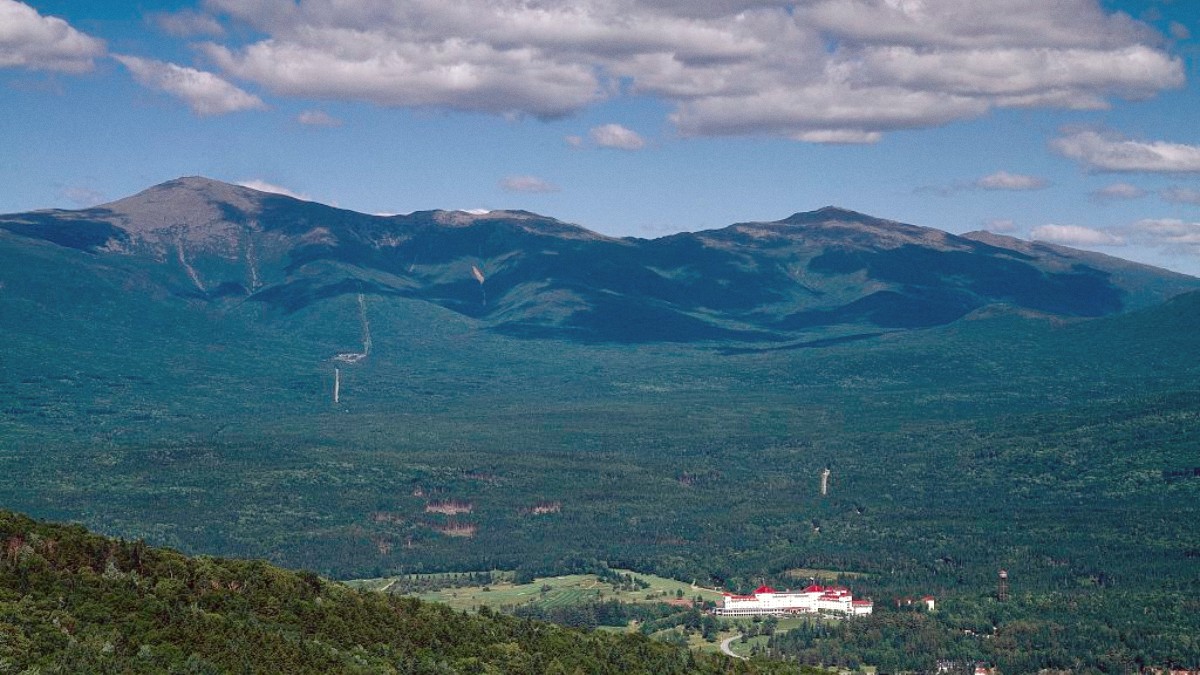
New Hampshire, USA
Summer (June-August) brings the warmest temperatures, with valley temperatures generally ranging from 60s to 80s°F (15-27°C). Higher elevations experience cooler temperatures. This period marks the peak hiking season, offering comfortable conditions for outdoor pursuits. Pop-up thunderstorms are common in the afternoons. The fall (September-October) features cool, crisp weather, ideal for foliage viewing.
Temperatures typically range from 40s to 60s°F (5-15°C), often dropping below freezing at night. Peak foliage usually occurs from late September to early October, though timing varies. Spring (April-May) brings unpredictable weather. Temperatures at lower elevations typically range from 30s to 50s°F (0-10°C). Significant snowmelt leads to muddy trails. Winter (November-March) brings cold and snowy conditions, ideal for winter sports.
Summer (July-August) offers warm weather, with all attractions operating, full trail access, and longest daylight hours. These periods experience crowds, higher accommodation prices, and popular trails/parking lots filling quickly.
Fall foliage (late September-early October) features spectacular colors and crisp hiking weather. This time is extremely crowded, with the highest accommodation prices and heavy traffic on scenic routes.
Be aware of rapid changes
High elevations experience arctic-like conditions even in summer. Hypothermia poses a risk year-round.
Clear skies turn into whiteouts or thunderstorms within hours. Monitor forecasts.
Fewer crowds, variable conditions
Fewer crowds, wildflowers, rivers for paddling, lower prices. Muddy trails and black flies possible.
Very few crowds, lower prices, subdued colors. Many attractions close, unpredictable weather.
Winter activities dominate
Ideal for skiing, snowboarding, snowshoeing, ice climbing. Fewer tourists not skiing.
Very cold temperatures, challenging driving conditions, many roads and attractions close.
Mountain summits experience arctic-like conditions even in summer. Mount Washington, in particular, records notoriously harsh weather. Hypothermia poses a risk year-round if unprepared for sudden temperature drops. Weather in the mountains changes dramatically and quickly.
High winds frequently occur at elevation, specifically in exposed areas and on summits. Wind chill makes even moderate temperatures feel much colder. Late April to early June often brings very wet, muddy trails due to snowmelt and spring rains. Hikers prepare with waterproof footwear or avoid this period to protect trails.
Always check multiple weather forecasts specific to your planned elevation.
Dress in layers, avoid cotton, and carry extra warm clothing.
Use waterproof footwear during mud season.
Account for wind chill effects at higher elevations.
Plan for varied conditions; clear skies turn quickly.
Travelers visiting the White Mountains must meet general United States entry requirements. New Hampshire itself imposes no special entry rules beyond federal guidelines.
Standard U.S. Entry requirements apply for international visitors. This typically means a B-2 (Tourist) Visa or travel under the Visa Waiver Program (VWP) via an approved Electronic System for Travel Authorization (ESTA).
For U.S. Citizens, a valid state-issued driver's license or a passport suffices for air travel. International visitors have broader requirements.
Costs vary significantly based on travel style, accommodation choices, and planned activities. The United States Dollar (USD, $) serves as the currency.
The region generally maintains a very safe environment with low crime rates. Outdoor activities call for specific precautions.
Lyme disease and anaplasmosis. Wear long clothing, apply Insect repellent with DEET or Picaridin like Sawyer Products Picaridin Insect Repellent, and check for ticks.
Risks year-round at high elevations. Dress in layers, carry extra warm clothing, avoid cotton.
High elevation UV exposure. Use Broad-spectrum sunscreen (EltaMD UV Clear), wear a Wide-brimmed hat and Sunglasses.
Tap water in towns is safe. For backcountry water, use purification.
Do not drink untreated water from streams, rivers, or lakes. Use a LifeStraw or Sawyer Products Squeeze Water Filter System or Purification tablets.
Wildlife such as black bears and moose inhabit the region. Do not approach or feed them. Store food properly in bear-resistant containers or hung from trees. Make noise while hiking to avoid surprising animals. Consider Bear spray if experienced and permitted.
Recommended routine vaccinations for all travelers. Consult a healthcare provider.
Cottage Hospital (Woodsville), Speare Memorial Hospital (Plymouth), Memorial Hospital (North Conway), and Littleton Regional Healthcare (Littleton).
Available in larger towns like North Conway and Plymouth.
Dial 911 for police, fire, or medical emergencies. New Hampshire Fish and Game Department oversees mountain rescue (603-271-3361).
Awareness of seasonal hazards supports safety.
Travel insurance is recommended, especially for international visitors or those planning high-risk outdoor activities. Policies should cover medical emergencies, evacuation, trip cancellation, and lost luggage.
Consider World Nomads, SafetyWing, or Insubuy for coverage. Check exclusions for high-risk sports.
A Garmin InReach Mini 2 Satellite Communicator facilitates emergency communication where cell service is unreliable.
For delayed/canceled flights, AirHelp assists in obtaining compensation.